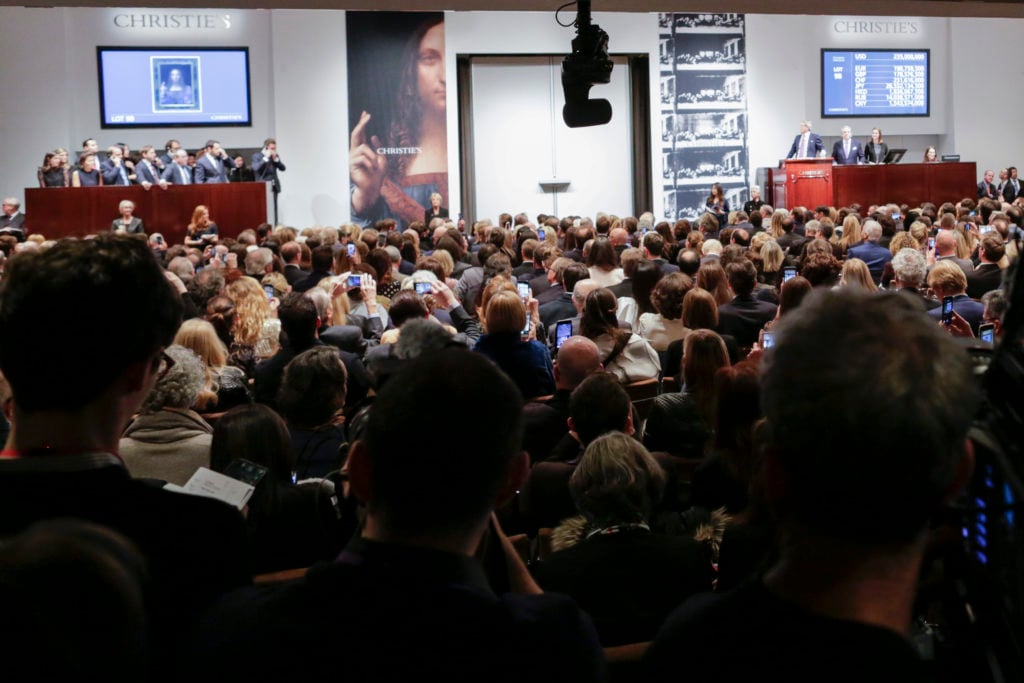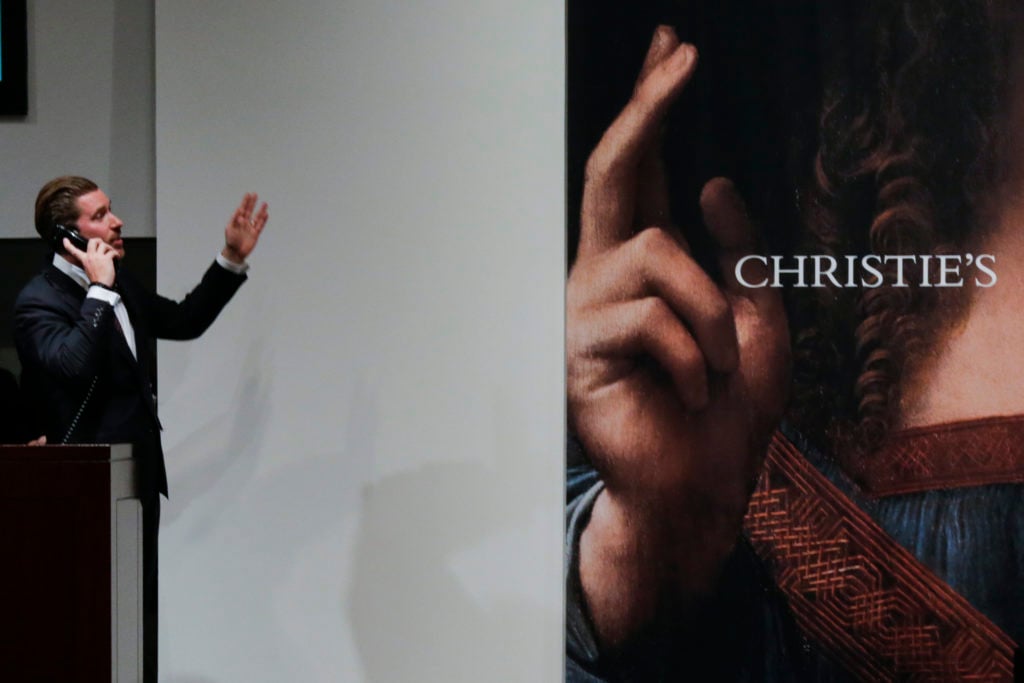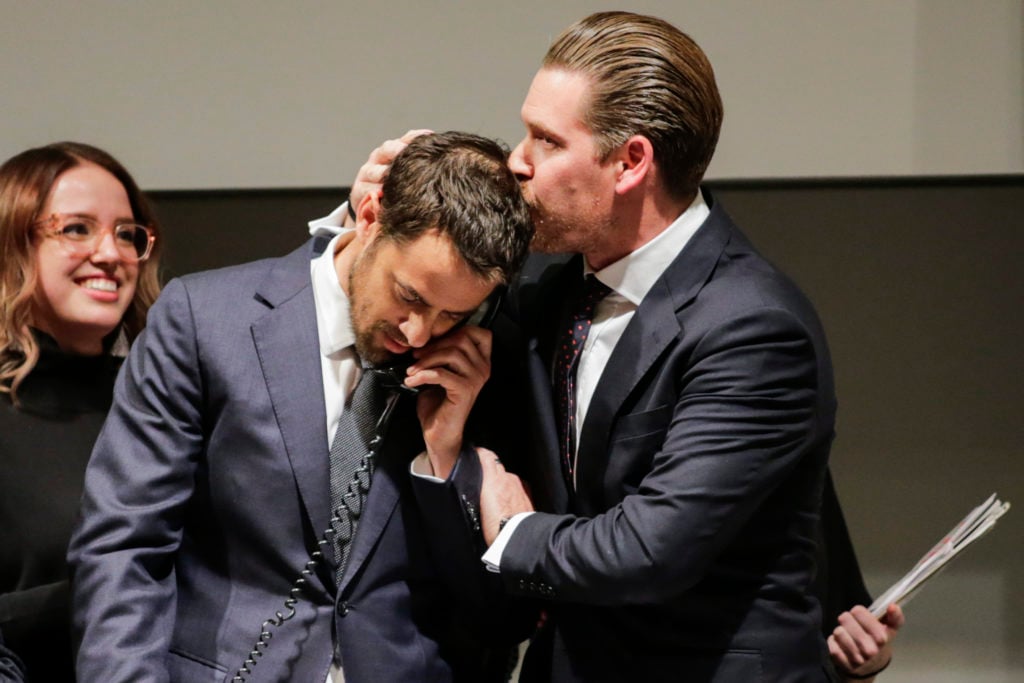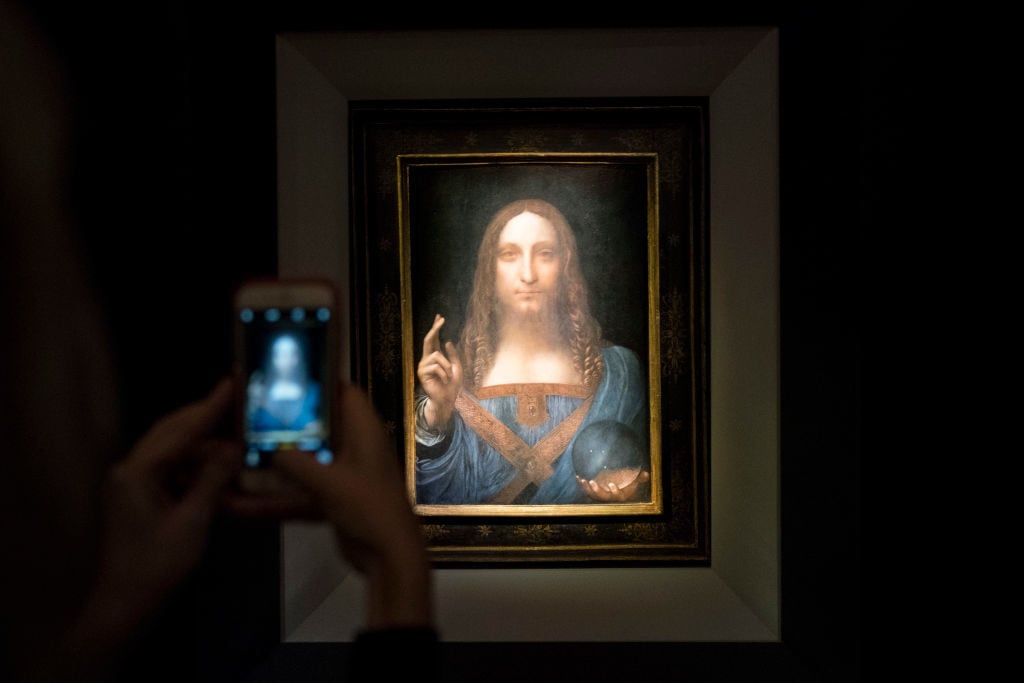Analysis
Why Would Anyone Pay $450 Million for the ‘Salvator Mundi’? Because They’re Not Buying the Painting
An attempt to psychoanalyze the buyer of Leonardo da Vinci's 'Salvator Mundi.'

An attempt to psychoanalyze the buyer of Leonardo da Vinci's 'Salvator Mundi.'

Tim Schneider

Every May and November, many around the art world wonder aloud—with varying degrees of frustration—why so much of the media fixates its auction coverage on star lots and gaudy prices. The 36-hour frenzy following Christie’s sale of Salvator Mundi (circa 1500), the so-called “Last da Vinci,” answered those questions with the blunt force of a bowling ball dropped onto a parked car from a penthouse window.
By now, everyone reading this piece knows that the painting sold for a hallucinatory amount of money: $450.3 million with the auction house premium, crushing the painting’s guarantee of nearly $100 million by a 4.5X multiple. And ever since, nearly everyone with even a tangential interest in art has felt compelled to grapple with the unexpected result in some way, even if only by vocalizing how much more attention or money we as a species could be dedicating to other, more important issues.
I’m sympathetic to that viewpoint. However, regardless of whether you’d committed yourself to avoiding the art market entirely or felt you’d made complete peace with big money’s impact on culture, seeing Salvator Mundi’s price tag is still like taking your dog out for its regular morning walk only for it to be snatched off the street by a pterodactyl. The outcome is so far out of bounds that it bends our understanding of reality’s basic parameters.

Christie’s Alex Rotter on the phone with the winning bidder of Leonardo da Vinci’s Salvator Mundi. Photo by Eduardo Munoz Alvarez/Getty Images.
This is not to say that everyone does or should care about solving the art-market whodunit that erupted again last night, just as it does every time a high-profile auction lot dramatically exceeds expectations. (Was it Bill Gates in the Valley with Microsoft money? A royal in the Emirates with a barrel of oil wealth? A multi-billionaire in China brandishing a black card?)
But the game has to be played, largely because circumstances suggest that Salvator Mundi’s new owner wasn’t solely interested in acquiring the “Last da Vinci,” or even a renowned artwork of any kind. They also seemed just as, if not even more, intent on acquiring the title of World’s Most Famous Collector.
As of two months ago, Christie’s revised fee structure dictated that hammer prices over $4 million would carry a 12.5 percent buyer’s premium. So once the bidding for Salvator Mundi hit $160 million, the winner was guaranteed to edge out the owner of Picasso’s Les Femmes d’Alger (Version “O”) (1955)—which sold in May 2015 for a premium-inclusive price of $179.4 million—for the largest sum ever paid for a work of art in a public sale.
Then, when bidding surpassed $267 million, the winner also knew they would overtake Ken Griffin, who is reported to have purchased Willem de Kooning’s Interchange for $300 million in a private deal last year. Suddenly, the bidder earned the distinction of having paid the highest sum for a piece in ANY sale. (Nevermind that some have speculated that Griffin might be behind the purchase of the da Vinci as well.)
Here’s the truly mind-altering part of it all, though: Bidding continued for another $133 million past the $267 million point. This is equivalent to half of the previous total for the most expensive artwork ever known to have been purchased in modern times.
Even more psychedelic, a full $30 million of that excess came in the final bid, when the soon-to-be winner signaled for his proxy, contemporary department co-head Alex Rotter, to make the quantum leap from $370 million to $400 million.
In auction terms, it was as WTF as the opening scene in Tony Scott’s 1991 action flick The Last Boy Scout,” where an NFL running back pulls a pistol from his waistband and opens fire on the last few defenders separating him and the football from the goal line. You just don’t make moves that extreme that late in this game.
None of this is meant to underrate the importance or effectiveness of Christie’s unprecedented 360-degree marketing campaign around Salvator Mundi. Certainly, well-built brands mattered here: Christie’s, Leonardo’s (absurd as it is to say), and even those of nascent contemporary co-chair bromantics Loïc Gouzer and Rotter.

Christie’s rainmakers Alex Rotter and Loïc Gouzer celebrate after the gavel goes down. Photo by Eduardo Munoz Alvarez/Getty Images.
The same can be said for the painting’s multi-city pre-sale tour, viral videos, and even the special red paddles handed out in the room to registered da Vinci bidders. Nothing sells for hundreds of millions of dollars without a healthy dose of hype.
Yet I would argue that the $450.3 million result owes just as much, if not more, to self-branding rather than outside branding. It feels less to me like marketing overcame connoisseurship than that connoisseurship was irrelevant from the start.
This is the main reason I doubt the painting was won by a consortium. In general, buyers only partner up on an artwork if they think they can turn a meaningful profit on a subsequent resale. At $450.3 million—remember, 150 percent more expensive than what was previously known as the most expensive piece ever sold in any context—that outcome for Salvator Mundi now borders on the surreal.
Instead, my hunch is that Salvator Mundi’s new owner is an individual—one for whom the value of owning the world’s most expensive artwork outweighs literally everything else.
In the taxonomy of the class of buyers I call COINs (Collectors Only In Name), I’d refer to this individual as a Stockpiler: Someone who views paying a stratospheric price for a single work as more important than the possibility to turn a profit on it later.
A single $450 million da Vinci simply makes more of a statement to one’s peers than ten $45 million Richters, let alone a resale gain of, say, a few hundred million dollars. Plenty of elites could, and do, own pieces worth that lower value. At least a few others also generate profits of similar magnitude in their core businesses.

A visitor takes a photo of Leonardo’s Salvator Mundi at Christie’s New York. Drew Angerer/Getty Images.
But only one buyer can ever own the most expensive artwork in the world at any given time—and achieving that rarefied socioeconomic status now drives behavior at the pinnacle of the art trade to a vertigo-inducing degree.
This was not just an acquisition. This was arguably the greatest socioeconomic flex the arts have ever seen, made possible by an obscene level of wealth inequality and interest in conspicuous consumption.
Which is also why I think so many observers have become so eager to question the piece’s valuation, attribution, and restoration. Karmically, the average art lover wants to believe that someone who has that much more money than him or her has either overpaid or got played in the transaction. If the new plutocrats are also making defensible decisions with their boundless cash reserves, what chance do the rest of us have to succeed?
So yes, I suspect we’ll learn the name of the person responsible for setting this disorienting record soon enough. As for what nearly everyone else should do with an art world, and a larger world, that made this record-detonating buy possible? Heaven only knows.